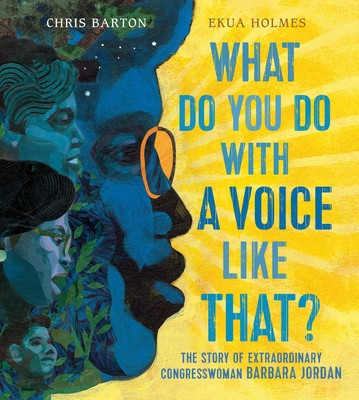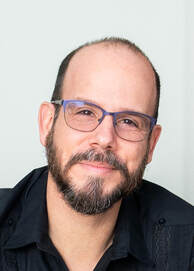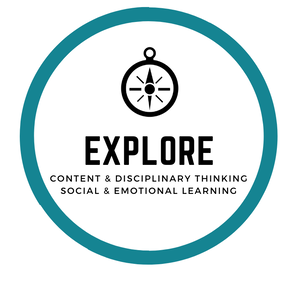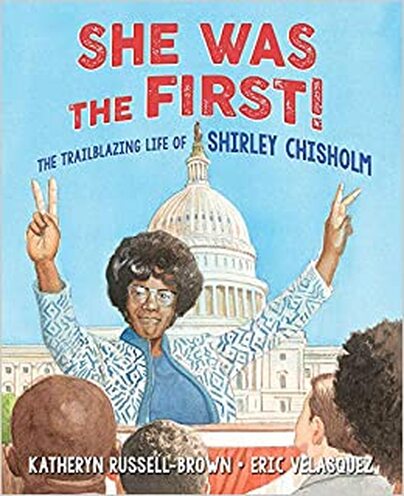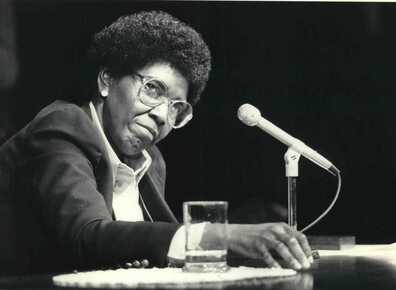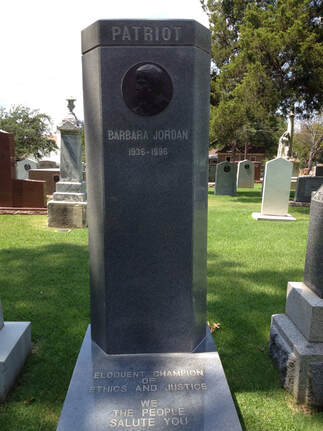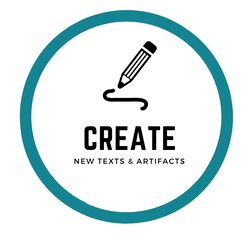|
Entry written by Mary Ann Cappiello and Scott Riley, on behalf of The Biography Clearinghouse.
|
Research & Writing ProcessWho is Chris Barton?
|
Chris's Process & ArtifactsListen to Chris explain how he researched and wrote What Do You Do with a Voice Like That? including:
|
|
Craft & Structure
Pre-Reading with Verbs
|
Throughout What Do You Do with a Voice Like That?, Chris Barton uses precise language and vivid verbs, such as: implore, inspire, heeded, rumblings, booming, and crisp. At the end of his first draft of What Do You Do with a Voice Like That? Chris Barton created a list of verbs that he could attach to Barbara Jordan’s voice. Most of those verbs didn’t make it into the actual book.
|
Before students read, What Do You Do with a Voice Like That?, share Barton’s verb list (see artifacts) with them and the title of the book. Have students brainstorm what they think the book is going to be about just based on these verbs. Next, have them read the book. Then, go back to the verb list. What do they think about after rereading those verbs?
|
Word Choice
|
Word choice plays an important role in every picture book, biography or not. In our entry on Otis and Will Discover the Deep, Barb Rosenstock revealed that she keeps a word bank for every book, and in this entry, Barton shares with us the list of verbs that didn't make it into the book.
|
Have students read Otis and Will Discover the Deep. With Rosenstock’s and Barton’s books read, have the students compare and contrast word choice in each, as well as the word banks created by the authors. Next, have them consider a current writing project. Working with a partner, have students develop a word bank for this project. As students draft and revise, have them go back to their word banks to replace “regular” words with more precise ones.
|
Sentence Structures
|
One thing that stands out in all of Chris Barton’s books are his sentence structures. Just as he does with word choice, Barton plays with sentence lengths and structures, sometimes repeating them and sometimes giving them a twist.
|
After reading What Do You Do with a Voice Like That? aloud with students, have them find “mentor sentences” that stand out. Ask students to name what Barton does in the mentor sentences. Are they short and to the point? Do they repeat? Are they in the form of a call and response? Then have students craft their own sentences based on their favorite mentor sentences. They could do them for a previously written piece or for a new piece based on themselves or someone they know (a friend, a mom, a dog, etc.) who is worthy of a story, What Do You Do with a….. Like That?
|
Content & Disciplinary ThinkingMultimedia Research
Depending on the age of your students and when you share it, you could use the clip to explore what she is saying and how she is saying it. You could also ask students to describe her voice and explain it to someone who hasn’t heard her speak. Ask students to consider how hearing her voice changes or deepens their understanding of What Do You Do with a Voice Like That. How does hearing Jordan’s voice change their understanding of who she was?
|
Black Women in Congress in the 1970s: Barbara Jordan and Shirley Chisholm
|
After reading What Do You Do with a Voice Like That?, have students read She was the First! The Trailblazing Life of Shirley Chisholm, written by Katheryn Russell-Brown, illustrated by Eric Velasquez. In 1968, Chisholm was the first Black woman elected to the U.S. Congress and, in 1972, first Black woman to run as a presidential candidate. Both books emphasize the ways in which each woman used her education and her voice to work for social justice on behalf of others. Have students compare and contrast the challenges each woman faced, as well as their accomplishments. If working with older students, you may want to use the picture books as a springboard for a deeper examination of Black women in Congress breaking barriers, using the following resources to learn more about Barbara Jordan and Shirley Chisholm:
|
Learning about the United States Government
For some readers, What Do You Do with a Voice Like That? might be the first time they’ve read about an individual person in the government. After reading this book, you could lead students on an inquiry into local, state, and federal government structures and systems. Barbara Jordan served in both a state legislature and in the federal one. How are they similar? How are they different? Depending on the age of your students, you could also choose to dig deeper into the impeachment process, given Jordan’s experiences in Richard Nixon’s impeachment trial. You could also explore racial and gender representation in government over time. This could extend into an exploration of the impact of gerrymandering on diversity in representation within local, state, and federal legislative bodies in the United States today.
Social & Emotional Learning
Values and Voice
|
Through What Do You Do with a Voice Like That? Chris Barton shares how Barbara Jordan used her voice to bring attention to issues and ideas that mattered to her and took action. Have students reread the book and make a list of them. Then lead a discussion on issues and ideas that matter to the students. Talk about problems in your community or at your school that need a voice like Jordan’s. Students could use their voices to spread awareness and carry out action campaigns.
|
Tombstone Synthesis
|
During our interview and in his Author’s Note, Chris Barton discusses the words that Barbara Jordan chose for each side of her tombstone: Patriot and Teacher. After reading What Do You Do with a Voice Like That?, ask students why they think Jordan made that choice. What do those words reveal about Jordan’s values? About her life’s work? What did she want people to remember? Read aloud another picture book biography to the class. Have students brainstorm what two words they might put on a memorial or monument to that subject’s life. The conversation around word choice is likely more important than which two words “win.” Remind them that choosing words to represent someone is different than having that person choose their own words. Finally, have students read self-selected biographies and determine what two words they would use to memorialize the achievements of their subjects. The words students’ choose will reveal a synthesis of their subjects’ lives which can help you assess their comprehension of their books. You may need to remind students that tombstones are a kind of memorial or monument, and that some cultures don’t use tombstones and graveyards for their dead.
|
New Texts & ArtifactsCrafting Partial BiographiesChris Barton and Barbara Jordan both lived in Austin, Texas. Barton attended the University of Texas at Austin, when Jordan was still teaching there, but he never took a class with her or met her. As part of his research, Barton spoke with people who did know Jordan: her sister, former students, even her debate coach from high school. What can you learn about a person from other people? In this activity, over 1 or 2 days, or 1 or 2 weeks, depending on the time you have available, your students have the opportunity to write a partial biography about another student in the class, or a person in your community, drawing from what they know about that person, what they can research, and/or a conversation with someone else.
|
If you have 1-2 hours . . . |
If you have 1-2 days . . . |
If you have 1-2 weeks . . . |
|
After reading What Do You Do with a Voice Like That?, have students brainstorm different people in your class, your school, or your local community about whom they could write a brief sketch. Have students focus on someone with whom they’ve had an important interaction: a classmate, teacher, coach, neighbor, faith leader, etc. Have them write about a particular moment with that person, drawing on some of the writing techniques exploring in our Investigate section.
|
Have the student conduct short interviews with their subject, to add details from the moment, and from that person’s life, that they didn’t include in their initial draft.
Also, support students in finding out additional information from appropriate sources, like their professional biography on the school’s or organization’s website, or from classroom evidence. Have them use this new information to add details to their original draft |
Have students conduct a short interview with a third party, someone else who knows their subject well, like a family member, work colleague, sibling, or classmate. What new insights do they gain?
In a final round of revision, have students add this new information to their partial biography. |
Making Our Own Voices Heard
Barbara Jordan used her voice and her education to become an advocate for the people around her and ultimately, for the American people as a whole in her role as representative. At the end of his narrative, Barton writes, “...what do we do with a voice like that? We remember it, and we honor it by making our own voices heard” (unpaged). What do your students already advocate for? What changes do they want to see in your community, the nation, or the world? How can they make their voices heard? In this activity, over 1 or 2 days, or 1 or 2 weeks, depending on the time you have available, your students have the opportunity to explore and advocate for their community in the footsteps of Barbara Jordan.
If you have 1-2 hours . . . |
If you have 1-2 days . . . |
If you have 1-2 weeks . . . |
|
After reading What Do You Do with a Voice Like That?, have students brainstorm the people in your community or in the world today who need a voice like Barbara’s from the Socio-Emotional Learning section above. How can students amplify the voices of those people and help them advocate for their needs as allies?
|
Have students conduct a video-conference conversation with members of a local or regional organization that advocate for people and/or issue that your students have identified. Be sure to have students prepare questions in advance; help students to organize their questions by related subtopics.
|
Working with your school or local public librarian, gather print and digital resources your students can use to conduct more research on the people and/or issue they have identified. Work together to create and implement an action plan, to take your students’ advocacy work out of the classroom and into the community.
|
Local Leaders, Local Issues
Barbara Jordan was a tireless advocate for her community, representing Houston in the Texas State Senate and the U.S. House of Representatives. Who represents your students and their families at the local, state, and federal levels? In this activity, over 1 or 2 days, or 1 or 2 weeks, depending on the time you have available, your students will have the opportunity to learn more about their elected leaders at the local, state, and federal levels. Students will identify and research the issues for which selected leaders advocate, and communicate their thoughts, recommendations, and questions.
If you have 1-2 hours . . . |
If you have 1-2 days . . . |
If you have 1-2 weeks . . . |
|
After reading What Do You Do with a Voice Like That?, have students read Kamala Harris: Rooted in Justice, written by Nikki Grimes, illustrated by Laura Freeman. How did Harris’ childhood prepare her for public life? What barriers did she face? How is Harris’ career similar to and different from Jordan’s?
|
Have students identify your local leaders, state representatives and senators, your Member of Congress, and your two U.S. Senators. Individually, in pairs, or in small groups, have students research these local leaders. The following links may be useful for identifying your federal leaders:
|
Working with your school or local public librarian, gather print and digital resources your students can use to conduct more research on one of the issues upon which their selected leader focuses. After they have learned more about the issue, have students develop a set of questions about this issue. They can either write letters/emails to their selected leader, or you can organize video conference sessions with them.
|
Cappiello, M.A., & Riley, S. (2020). What Do You Do with a Voice Like That? The Story of Extraordinary Congresswoman Barbara Jordan. The Biography Clearinghouse.

